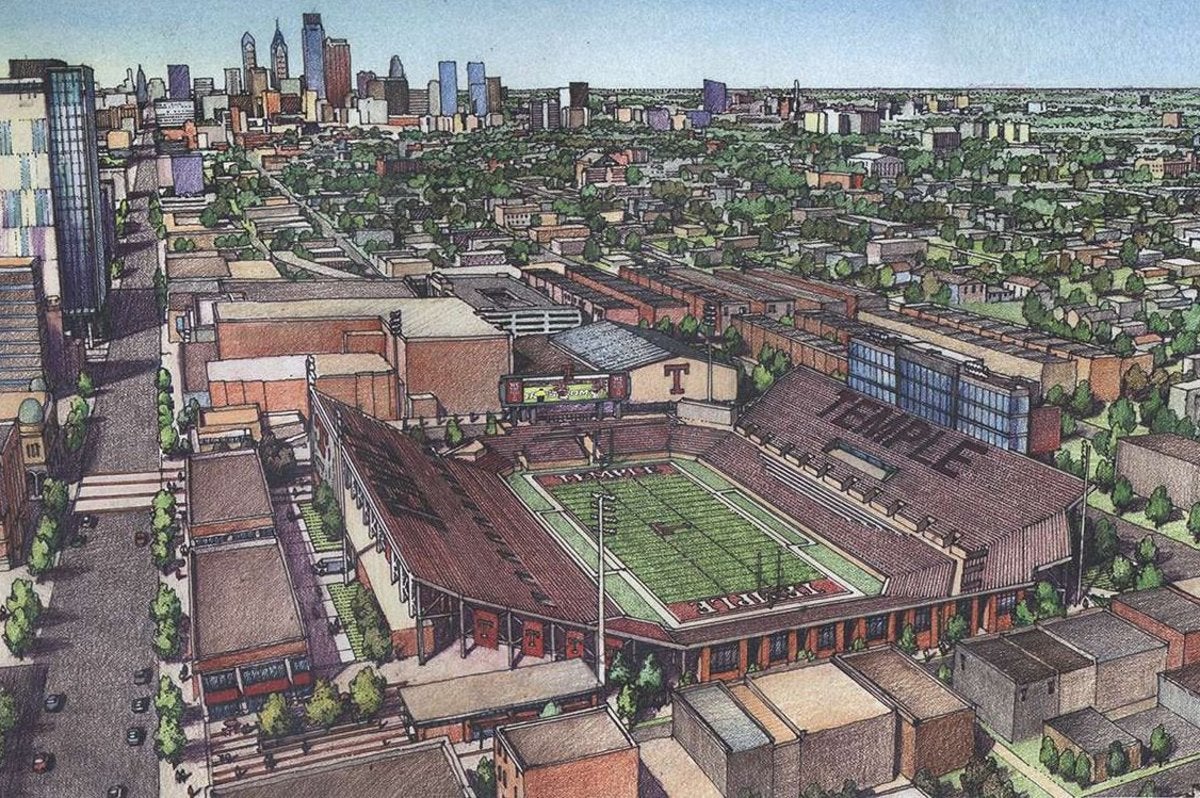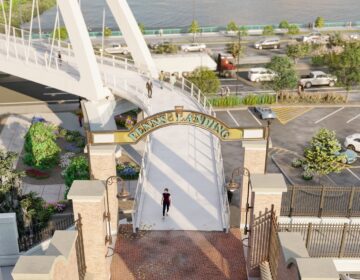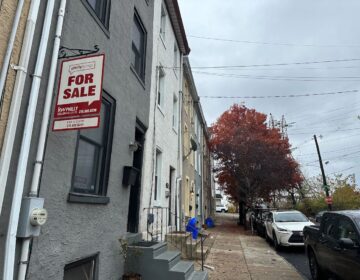Temple: Proposed football stadium won’t jam traffic or create parking problems

Temple University’s renewed push to build a $126 million, 35,000-seat football stadium next to its North Philadelphia campus has inspired an all-out blitz of defensive measures aimed at stopping the Owls cold in their tracks.
Among the many complaints aimed at sacking Temple’s stadium: Traffic. Temple plans to close 15th Street along the two blocks between Norris Street and Montgomery Avenue to build the stadium, and opponents have argued that would clog streets throughout the area, even outside of game days.
But according to Dozie Ibeh, associate vice president of Temple’s project delivery group, neighbors shouldn’t worry about traffic encroachment in the surrounding residential neighborhood and fans parking on side streets. “We don’t anticipate that to be the case at all,” said Ibeh, citing a traffic study conducted by the university, which has not yet been publicly released.
Temple’s traffic engineers counted cars on 15th Street during its heaviest congestion, Ibeh said and tallied a peak of 310 cars per hour passing through the proposed closure area. That traffic would be redirected to Broad Street, which sees around 3,000 cars per hour during its heaviest traffic. Another 300 vehicles would have negligible impact, said Ibeh, because “we know that Broad Street can go up north of 5,000 cars per hour in the area.”
Stadium opposition leader Reverend William B. Moore of Tenth Memorial Baptist Church said Temple’s assurances could not withstand further review. “That argument really does not square with anything that is reasonable to what is going on in this city and certainly with what is going on in the neighborhood,” said Moore. “Already neighbors are complaining when they have games at the Liacouras Center — they do have a problem with parking and traffic.”
The Liacouras Center, Temple’s basketball arena located on the southwestern corner of Montgomery Avenue and Broad Street, holds 10,200 — less than a third of proposed football stadium’s 35,000 seats. Still, Ibeh insisted that Temple would be able to handle the influx of football fans on game days.
Temple expects around 12,500 spectators will take SEPTA to the game, whether by bus, the Broad Street Subway, or Regional Rail. Temple also expects the students it currently buses down to Lincoln Financial Field, where the Owls currently play their home games, to walk. According to Ibeh, that’s another 10,000. The remaining 12,500 will drive, but Ibeh said Temple has enough parking for all of them.
Assuming an average of 2.5 to 3 fans per car means Temple would need around 4,200-5,000 parking spots for games, Ibeh said. Right now, Temple has 5,294 on-campus spots, not counting private parking lots nearby. And, Ibeh added, the university would work with the city to discourage fans from parking on- street in the nearby neighborhood, saying Temple would look into linking game tickets with parking passes. “That’s absolutely what we don’t want — any parking in the neighborhood — and it’s something we’re going to strictly enforce.”
Moore was unswayed. “I think that really what temple is doing now is just symptomatic of what they’ve been doing the last 40 years: disrespecting the neighborhood.”
The plan requires City Council’s approval to close 15th Street. On Monday, Council President Darrell Clarke, who represents the area, said he would oppose the stadium so long as local residents did. Thanks to councilmanic prerogative, whereby City Council defers to the local council member on most matters directly affecting their district, it will be virtually impossible for Temple to advance the plan without Clarke’s support. “The project is only feasible if we close 15th Street, because it runs right down the center of the stadium,” said Ibeh. “So, that’s a prerequisite.”
Temple owns the site on the western side of Broad Street, which currently holds two multi-use outdoor turf fields on the westside of 15th, and tennis courts and a gym facility on the eastside. Most of Temple’s campus sits east of Broad Street, but the residential neighborhoods just west have seen a large influx of students moving into off-campus apartments built specifically for college kids.
WHYY is your source for fact-based, in-depth journalism and information. As a nonprofit organization, we rely on financial support from readers like you. Please give today.






